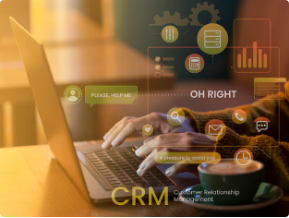Globalization has profoundly reshaped the economic landscape, influencing businesses of all sizes around the world. For local businesses, the impact of globalization can be both a challenge and an opportunity. This article delves into the various ways globalization affects local businesses, exploring the benefits, challenges, and strategies for adapting to an increasingly interconnected global market.
Understanding Globalization
Globalization refers to the process by which businesses, economies, and cultures become integrated and interdependent on a global scale. This phenomenon is driven by advances in technology, communication, transportation, and trade policies, resulting in the increased flow of goods, services, capital, and information across borders.
Benefits of Globalization for Local Businesses
- Access to Larger Markets
- Expanded Customer Base: Globalization allows local businesses to reach a broader audience beyond their domestic markets. By tapping into international markets, businesses can increase their customer base and boost sales.
- Export Opportunities: Local businesses can take advantage of export opportunities, selling their products and services to customers around the world. This diversification can reduce dependence on local markets and enhance revenue streams.
- Cost Efficiency
- Economies of Scale: Globalization enables businesses to achieve economies of scale by increasing production volumes and reducing costs per unit. This can lead to lower prices for consumers and higher profit margins for businesses.
- Access to Cheaper Resources: By sourcing raw materials and components from countries with lower production costs, local businesses can reduce their expenses and improve cost efficiency.
- Innovation and Technology Transfer
- Adoption of Best Practices: Exposure to global markets encourages local businesses to adopt best practices and innovative technologies from around the world. This can enhance productivity, efficiency, and competitiveness.
- Collaborative Innovation: Globalization fosters collaboration between businesses across borders, leading to the exchange of ideas and joint ventures. This collaborative environment can drive innovation and spur new product development.
- Enhanced Competitiveness
- Benchmarking: Competing on a global scale compels local businesses to benchmark their performance against international standards. This can motivate businesses to improve their quality, service, and overall competitiveness.
- Access to Talent: Globalization allows businesses to tap into a global talent pool, attracting skilled workers and experts from different parts of the world. This can enhance the capabilities and expertise of local businesses.
Challenges of Globalization for Local Businesses
- Increased Competition
- Market Saturation: Globalization leads to increased competition as foreign companies enter local markets. Local businesses may find it challenging to compete with larger, more established multinational corporations.
- Price Pressure: Intense competition can result in price wars, putting pressure on local businesses to lower their prices and potentially eroding profit margins.
- Cultural and Operational Differences
- Cultural Barriers: Entering foreign markets requires an understanding of different cultural norms, preferences, and behaviors. Failing to adapt to these differences can hinder a business’s success in new markets.
- Operational Complexities: Managing international operations involves dealing with different regulations, logistics, and supply chain complexities. This can increase the operational burden on local businesses.
- Economic Vulnerability
- Economic Dependence: Relying heavily on global markets can make local businesses vulnerable to global economic fluctuations, trade disputes, and geopolitical tensions. Economic downturns in key markets can significantly impact business performance.
- Exchange Rate Risks: Fluctuations in exchange rates can affect the profitability of international transactions. Businesses must manage currency risks to mitigate potential financial losses.
- Regulatory and Compliance Issues
- Complex Regulations: Navigating different regulatory environments and compliance requirements can be challenging for local businesses. Failure to comply with international regulations can result in legal issues and penalties.
- Intellectual Property Protection: Protecting intellectual property (IP) in global markets can be difficult. Businesses must take proactive measures to safeguard their IP from infringement and unauthorized use.
Strategies for Local Businesses to Adapt
- Market Research and Analysis
- Understand Target Markets: Conduct thorough market research to understand the demand, competition, and cultural nuances of target markets. This information is crucial for tailoring products and marketing strategies to local preferences.
- Competitive Analysis: Analyze the strengths and weaknesses of competitors in global markets. Identify opportunities for differentiation and competitive advantage.
- Localization and Adaptation
- Product Localization: Adapt products and services to meet the specific needs and preferences of local markets. This may involve modifying product features, packaging, and branding to resonate with local consumers.
- Cultural Sensitivity: Ensure marketing and communication strategies are culturally sensitive and relevant. Use local languages, imagery, and messaging to connect with target audiences.
- Strategic Partnerships
- Collaborate with Local Partners: Form strategic partnerships with local businesses, distributors, and suppliers. These partnerships can provide valuable market insights, distribution channels, and support for navigating local regulations.
- Joint Ventures: Consider joint ventures with international partners to share resources, expertise, and risks. Joint ventures can facilitate market entry and expansion.
- Leverage Technology
- E-commerce Platforms: Utilize e-commerce platforms to reach global customers and streamline international sales. Online marketplaces and digital marketing can expand a business’s reach and visibility.
- Digital Transformation: Invest in digital tools and technologies to enhance operational efficiency, customer engagement, and data analysis. Digital transformation can drive innovation and competitiveness.
- Risk Management
- Diversify Markets: Diversify market presence to reduce dependence on a single market or region. This strategy can mitigate risks associated with economic downturns and geopolitical issues.
- Hedging and Financial Tools: Use hedging strategies and financial instruments to manage currency risks and protect against exchange rate fluctuations.
Case Study: Starbucks
Company Example: Starbucks Starbucks, the global coffeehouse chain, exemplifies how a local business can successfully navigate globalization. Originally a local coffee shop in Seattle, Starbucks expanded internationally by adapting its products and stores to suit local tastes and preferences. The company emphasizes cultural sensitivity and local relevance in its global operations. For instance, in China, Starbucks introduced tea-based beverages and incorporated local design elements into its stores. By blending global brand consistency with local adaptation, Starbucks has achieved significant global success while maintaining strong customer loyalty in diverse markets.
Conclusion
Globalization presents both opportunities and challenges for local businesses. By leveraging the benefits of expanded markets, cost efficiency, innovation, and enhanced competitiveness, businesses can thrive in a globalized economy. However, addressing the challenges of increased competition, cultural differences, economic vulnerability, and regulatory complexities requires strategic planning and adaptability. By conducting thorough market research, localizing products, forming strategic partnerships, leveraging technology, and managing risks, local businesses can successfully navigate globalization and achieve long-term success in the global marketplace.









